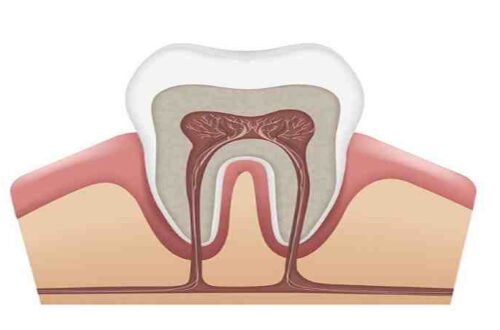Physical therapy plays a crucial role in helping people regain movement, improve function, and live a pain-free life. Whether you are recovering from surgery, dealing with chronic pain, or need assistance with injury rehabilitation, physical therapy can offer a tailored solution to improve your well-being. This guide will dive deep into what physical therapy services entail, the benefits they offer, and how you can make the most out of your sessions.
What is Physical Therapy?
Physical therapy is a specialized healthcare service focused on improving physical function, reducing pain, and enhancing mobility. It involves a combination of hands-on therapy, exercises, and education to address the root causes of various physical ailments. Licensed physical therapists assess each individual’s condition and create personalized treatment plans to achieve the best possible outcomes.
People of all ages can benefit from physical therapy services, whether they’re dealing with sports injuries, chronic diseases like arthritis, or mobility issues caused by aging. Physical therapists use a wide range of techniques and tools, such as manual therapy, therapeutic exercises, electrotherapy, and more, to treat musculoskeletal and neurological conditions.
Benefits of Physical Therapy
The main goal of physical therapy is to restore function, improve movement, and alleviate pain without the need for surgery or long-term medication use. Some of the key benefits include:
Pain Management: Whether you’re dealing with acute pain from a recent injury or chronic pain due to long-term health conditions, physical therapy services provide targeted treatments to reduce discomfort. Therapists use methods like manual therapy, heat/cold therapy, and specific exercises to help you manage pain effectively.
Improved Mobility and Flexibility: For people who have difficulty moving, walking, or performing daily activities, physical therapy can enhance mobility and flexibility. Regular sessions can improve joint function, muscle strength, and overall physical endurance.
Injury Prevention: Physical therapists do more than just treat existing conditions; they also work to prevent future injuries. By identifying potential weaknesses or imbalances in your body, they can create a plan that strengthens vulnerable areas, reducing your risk of re-injury.
Post-Surgical Rehabilitation: After surgery, it’s essential to regain strength and range of motion. Physical therapy services help patients recover safely and efficiently by gradually increasing activity levels and ensuring proper healing.
Management of Chronic Conditions: Chronic illnesses like arthritis, heart disease, and diabetes can significantly impact mobility and quality of life. Physical therapy offers tailored exercise programs and treatments that help manage these conditions, improving overall health and well-being.
Enhanced Balance and Coordination: As we age, balance and coordination can decline, leading to falls and injuries. Physical therapy services include balance training and coordination exercises that help maintain independence and reduce the risk of falling.
Common Conditions Treated by Physical Therapy
Physical therapy addresses a wide array of conditions, making it a versatile treatment option for many health issues. Here are some of the most common conditions that physical therapists treat:
Musculoskeletal Injuries: These include sprains, strains, fractures, and soft tissue injuries. Physical therapy services focus on restoring muscle strength, flexibility, and joint function in the affected area.
Neurological Conditions: Physical therapists often work with patients suffering from conditions like stroke, multiple sclerosis, Parkinson’s disease, and spinal cord injuries. By focusing on motor function, physical therapy helps improve coordination, balance, and overall mobility.
Post-operative Recovery: After surgeries such as joint replacements, spinal surgery, or ACL reconstruction, physical therapists guide patients through the rehabilitation process to restore strength and function safely.
Chronic Pain Conditions: Issues such as arthritis, fibromyalgia, and chronic lower back pain can significantly affect daily life. Physical therapy services provide targeted exercise programs and therapeutic treatments to alleviate discomfort.
Sports Injuries: Athletes frequently turn to physical therapy to recover from injuries like tendonitis, ligament tears, and concussions. Therapists also work to prevent future injuries by improving muscle balance and coordination.
Geriatric Issues: Aging can bring about a decline in mobility, balance, and strength. Physical therapy services help elderly individuals maintain their independence by addressing these age-related changes.
What to Expect During a Physical Therapy Session
A typical physical therapy session begins with an initial evaluation. During this time, the therapist will assess your medical history, current physical condition, and goals for therapy. They may perform various physical tests to evaluate your strength, range of motion, balance, and coordination.
Based on this assessment, the physical therapist will design a customized treatment plan, which may include:
Manual Therapy: Hands-on techniques like massage, joint mobilization, and stretching are used to reduce pain and improve mobility.
Therapeutic Exercises: These are specific exercises tailored to your condition, designed to strengthen muscles, increase flexibility, and improve balance.
Modalities: These include treatments like heat therapy, cold therapy, ultrasound, and electrical stimulation to reduce pain and inflammation.
Patient Education: A critical part of physical therapy services involves educating patients about posture, body mechanics, and how to perform daily tasks without aggravating their condition.
Consistency is key in physical therapy. Attending regular sessions and following the prescribed home exercise program ensures that you achieve the best possible outcomes.
How to Find the Right Physical Therapy Services
When looking for physical therapy services, it’s important to choose a provider that fits your specific needs. Here are some tips to help you find the right therapist:
Qualifications and Experience: Ensure that the therapist is licensed and has experience treating your specific condition. Some physical therapists specialize in certain areas, such as sports injuries, neurological conditions, or post-surgical rehabilitation.
Location and Accessibility: Since you may need to attend multiple sessions over an extended period, it’s helpful to choose a clinic that is conveniently located.
Personalized Treatment Plans: Make sure that the clinic offers customized treatment plans that are tailored to your individual needs rather than a one-size-fits-all approach.
Reviews and Recommendations: Check online reviews and ask for recommendations from friends, family, or your primary care physician to ensure the clinic has a good reputation.
Insurance Coverage: Confirm that the physical therapy services you’re considering are covered by your insurance plan to avoid unexpected costs.
Making the Most of Your Physical Therapy
While your therapist will guide your treatment, there are steps you can take to maximize the benefits of physical therapy services:
Commit to Regular Attendance: Skipping sessions or failing to follow through on prescribed exercises can slow down your progress. Consistency is key to achieving your therapy goals.
Communicate Openly: If you experience pain, discomfort, or challenges during your sessions, it’s important to communicate with your therapist so they can adjust your treatment plan.
Follow Home Exercises: Your therapist will likely give you exercises to do at home. Following these exercises as instructed will speed up your recovery and improve your overall results.
Conclusion
Physical therapy is a vital component of healthcare that offers numerous benefits, from pain relief to improved mobility. With its ability to address a wide range of conditions, physical therapy services provide personalized treatment plans tailored to each individual’s needs. Whether you’re recovering from surgery, managing chronic pain, or looking to prevent injuries, physical therapy can help you lead a healthier, more active life.
By choosing the right therapist, attending regular sessions, and following through with home exercises, you can make the most of your physical therapy services and achieve long-lasting results.





